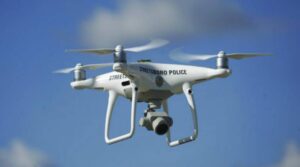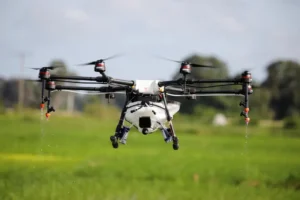The use of drones has become increasingly popular in recent years, as they offer a wide range of applications, from aerial photography and surveillance to package delivery and search and rescue operations. However, with the growing number of drones in the sky, there are concerns about their safety, privacy implications, and potential to cause harm. As a result, many countries have introduced regulations to govern the use of drones. In this article, we will discuss the legality and regulations of drone usage.
Legality of Drone Usage
The legality of drone usage varies depending on the country and the intended use. In general, drones are considered to be unmanned aircraft and are subject to the same laws and regulations as manned aircraft. Therefore, it is important to understand the regulations for operating drones in your jurisdiction.

In the United States, the Federal Aviation Administration (FAA) regulates drone usage. The FAA requires all drones to be registered, and drone operators must follow specific rules, including flying below 400 feet, staying within visual line of sight, and avoiding flying near airports or other restricted airspace. Violating these rules can result in fines and other penalties.
Similarly, in the United Kingdom, the Civil Aviation Authority (CAA) regulates drone usage. The CAA requires drone operators to obtain permission before flying near airports or in restricted airspace, and all drones over 250g must be registered. The CAA also requires drone operators to follow specific safety guidelines, such as flying below 400 feet and keeping a safe distance from people and property.
In Canada, the regulations for drone usage are governed by Transport Canada. Drone operators must obtain a Special Flight Operations Certificate (SFOC) if they plan to fly in controlled airspace or within 3 nautical miles of an airport. In addition, drones must be registered and operated in compliance with safety guidelines, such as flying below 400 feet and avoiding flying near people or property.
Regulations of Drone Usage
The regulations of drone usage are designed to ensure the safety of people, property, and airspace. They also address privacy concerns, as drones have the potential to capture images and data without consent.
One of the most important regulations of drone usage is to fly safely and responsibly. Drone operators must follow specific guidelines to ensure they do not cause harm to people, property, or other aircraft. For example, they should not fly near airports or in restricted airspace, and they should avoid flying over people or crowded areas.
Another important regulation of drone usage is privacy. Drones can capture images and data, which can be a privacy concern for individuals. Therefore, many countries have introduced regulations to govern the use of drones for surveillance or photography. For example, in the United States, the FAA has introduced rules that require drone operators to obtain a Part 107 certificate if they plan to use drones for commercial purposes, such as aerial photography. In addition, the FAA has introduced rules that require drone operators to obtain permission from property owners before flying over private property.
In the United Kingdom, the CAA has introduced regulations that require drone operators to obtain permission before flying in restricted airspace or near sensitive locations, such as nuclear power plants or prisons. The CAA has also introduced rules that require drone operators to obtain a Permission for Commercial Operations (PfCO) if they plan to use drones for commercial purposes.

In addition to safety and privacy regulations, many countries have introduced regulations that govern the use of drones for specific applications. For example, in the United States, the FAA has introduced rules that allow for the use of drones for search and rescue operations, as well as for package delivery. However, these rules require specific certifications and approvals from the FAA.
It is important for drone operators to understand and comply with these regulations to avoid fines or other penalties. In addition, it is important for individuals and organizations to be aware of their rights and privacy concerns related to drone usage.
As technology advances and drones become more widespread, it is likely that regulations will continue to evolve to address new challenges and concerns. It is important for governments, industry, and the public to work together to ensure that drones are used safely and responsibly, while also allowing for innovation and growth in the industry.
Moreover, it is important to note that drones are not only subject to national regulations but also international ones. The International Civil Aviation Organization (ICAO), a specialized agency of the United Nations, has been working on developing global standards and recommended practices for the safe operation of unmanned aircraft systems (UAS) since 2004. These standards and recommended practices cover a wide range of topics, including certification, licensing, airworthiness, operations, and air traffic management.
In addition, there are also guidelines and recommendations from industry associations and organizations. For example, the Drone code, developed by the Drone code Project, is a collaborative effort to create a common open-source platform for unmanned aerial vehicles (UAVs). The Drone code includes guidelines and recommendations for the safe and responsible use of UAVs, as well as a code of conduct for operators.
Another important aspect of drone regulations is enforcement. Governments and regulatory agencies must have the resources and capacity to enforce regulations and punish violations. This includes not only fines and penalties but also the ability to confiscate or ground drones that are being operated illegally or unsafely.
One of the challenges with enforcing drone regulations is the difficulty of identifying and tracking drone operators. Unlike manned aircraft, which have unique identification numbers, drones can be difficult to identify and track, especially if they are being operated outside of restricted airspace. This has led to the development of new technologies, such as geofencing and remote identification, that can help authorities monitor and track drone activity.
Geofencing is a technology that uses GPS to create virtual boundaries around restricted airspace or other sensitive areas. Drones that enter these areas can be automatically grounded or redirected, which can help prevent unauthorized or unsafe drone activity. Remote identification, on the other hand, is a technology that allows authorities to remotely identify and track drones in real-time. This technology is still in development, but it has the potential to greatly improve the ability of authorities to enforce drone regulations.
In conclusion, the legality and regulations of drone usage are complex and evolving. Drone operators must comply with national and international regulations, as well as guidelines and recommendations from industry associations and organizations. Governments and regulatory agencies must have the resources and capacity to enforce regulations and punish violations. The development of new technologies, such as geofencing and remote identification, can help improve the safety and security of drone operations. As the use of drones continues to grow, it is important for all stakeholders to work together to ensure that drones are used safely and responsibly.










